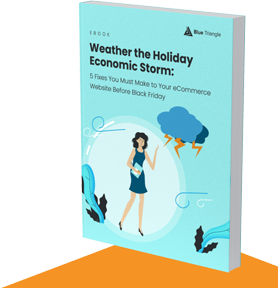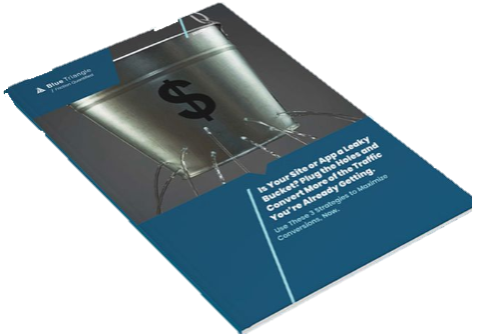Picture this: a visitor clicks on your site, ready to learn more, sign up, or make a purchase. But before they can, the page hesitates—an image takes too long to appear, the layout jumps as an ad loads, or a button lags just enough to break the flow. Within seconds, they’re gone.
That’s not just a user lost; that’s revenue left on the table.
In today’s digital economy, site performance is no longer a “nice to have.” It’s a competitive advantage. Both users and search engines demand pages that load fast, respond instantly, and stay visually stable from the first click to the final conversion.
That’s where three essential metrics—INP (Interaction to Next Paint), CLS (Cumulative Layout Shift), and LCP (Largest Contentful Paint)—come into play. Together, they measure how your website feels to real users, not just how fast it loads on paper.
And when you can measure the experience, you can optimize it with measurable business impact.
Why Core Web Vitals Matter
Every millisecond of delay, every unexpected shift, and every moment of lag adds friction to your customer journey. Core Web Vitals (CWV) help quantify and eliminate that friction.

1. LCP (Largest Contentful Paint)
LCP measures how long it takes for your page’s main content—often a hero image, headline, or core text—to render. A fast LCP (under 2.5 seconds) signals to users that your site is functional and ready for interaction. A slow one erodes confidence and increases bounce rates before the experience even begins.
2. CLS (Cumulative Layout Shift)
CLS tracks how much a page unexpectedly moves as it loads. If users try to click a button and it suddenly jumps because a new banner or image appeared, trust takes a hit. A low CLS score (below 0.1) ensures stability and predictability—critical ingredients in a polished digital experience.
3. INP (Interaction to Next Paint)
INP measures how quickly your site reacts when users interact—clicking, typing, or tapping. The best experiences feel instantaneous, with INP scores under 200 milliseconds. Beyond that, every fraction of a second can make your site feel sluggish, even if everything else loads perfectly.
Core Web Vitals are crucial for every team within an organization as they directly impact user experience and business outcomes, such as SEO performance and conversion rates.
Here's 7 more reasons why every team should care about CWVs.
Why Not Just Optimize for “Onload”?
For years, developers relied on a single benchmark: the onload event—the moment when a browser finishes loading all scripts, styles, and assets. But that metric doesn’t capture what users actually experience.
A site can register as “loaded” and still display blank areas, shifting elements, or delayed interactions.
That’s why Google’s Core Web Vitals shifted focus from technical completion to perceived usability:
- LCP ensures the most important content appears fast.
- CLS ensures the layout stays consistent and stable.
- INP ensures interactions feel immediate and effortless.
Optimizing only for onload creates the illusion of performance. Optimizing for INP, CLS, and LCP creates authentic performance—the kind that users feel and reward with engagement and conversions.
As Barry Pollard, a web performance advocate from Google, explained on this episode of The Frictionless Experience, Core Web Vitals represent much more than just dry technical benchmarks. They reflect the real-world experiences of users, and every part of your organization should care about them.
For insider tips from Barry on how to improve your Core Web Vitals, check out this blog post.
Quick Comparison: Onload vs. Core Web Vitals
| Metric | What It Measures | Limitation/Strength |
|---|---|---|
| Onload | When all resources finish loading (images, scripts, styles) | Technical benchmark, but disconnected from user experience. |
| LCP | Time until the largest visible element renders | Reflects real perceived load speed. |
| CLS | Visual stability during page load | Prevents shifting layouts and user errors. |
| INP | Responsiveness to user interactions | Captures the “feel” of smooth, responsive design. |
Blue Triangle: Connecting Performance to Revenue
Understanding what to fix is one thing. Knowing what’s worth fixing is another.
Blue Triangle helps teams identify exactly which Core Web Vital—and which selector within it—will have the greatest impact on user experience and business outcomes. By selecting a page and a metric, organizations can instantly see where optimization efforts will yield the biggest ROI.
Visualizing the Value
| Page Example | Metric to Optimize | Expected Impact | Revenue Forecast* |
|---|---|---|---|
| Homepage | LCP (faster hero image load) | Higher engagement, reduced bounce | +3.5% |
| Product Detail Page | INP (faster add-to-cart response) | Smoother checkout flow | +5.2% |
| Checkout Page | CLS (stable layout, no shifting buttons) | Fewer user errors, higher completion rate | +4.1% |
*Forecasts generated by Blue Triangle’s optimization insights.
This data-driven approach transforms performance metrics from technical KPIs into strategic growth levers.


Learn more about unlocking effortless Core Web Vitals optimization with VitalScope, a comprehensive CWV solution that allows you to see which pages require attention and dive into the specifics of what needs improvement.
The Next Step: Forecasting Revenue Uplift
Blue Triangle’s latest innovation takes this one step further—introducing revenue forecasting tied directly to each optimization opportunity.
Instead of guessing which fixes will pay off, teams can now see:
- Which page will drive the most value when optimized
- Which Core Web Vital (INP, CLS, or LCP) should take priority
- How much revenue uplift they can expect from each improvement
Performance work becomes less about “tuning” and more about investing—with clear, quantifiable returns.

Decisions at Your Fingertips
By connecting technical performance to business outcomes, Blue Triangle empowers organizations to move beyond theory and into action.
Every millisecond saved is a moment gained with your customer. Every smoother interaction is a step toward conversion. And every stable, fast experience builds trust that keeps users coming back.
Website optimization isn’t just about making pages faster—it’s about unlocking measurable growth through seamless digital experiences.
With INP, CLS, and LCP guiding the way, and Blue Triangle translating data into strategy, performance becomes more than a metric. It becomes a revenue driver.

During the holiday rush, every shopper matters
Optimize the customer journey before the eCommerce event of the year.

.jpg)



